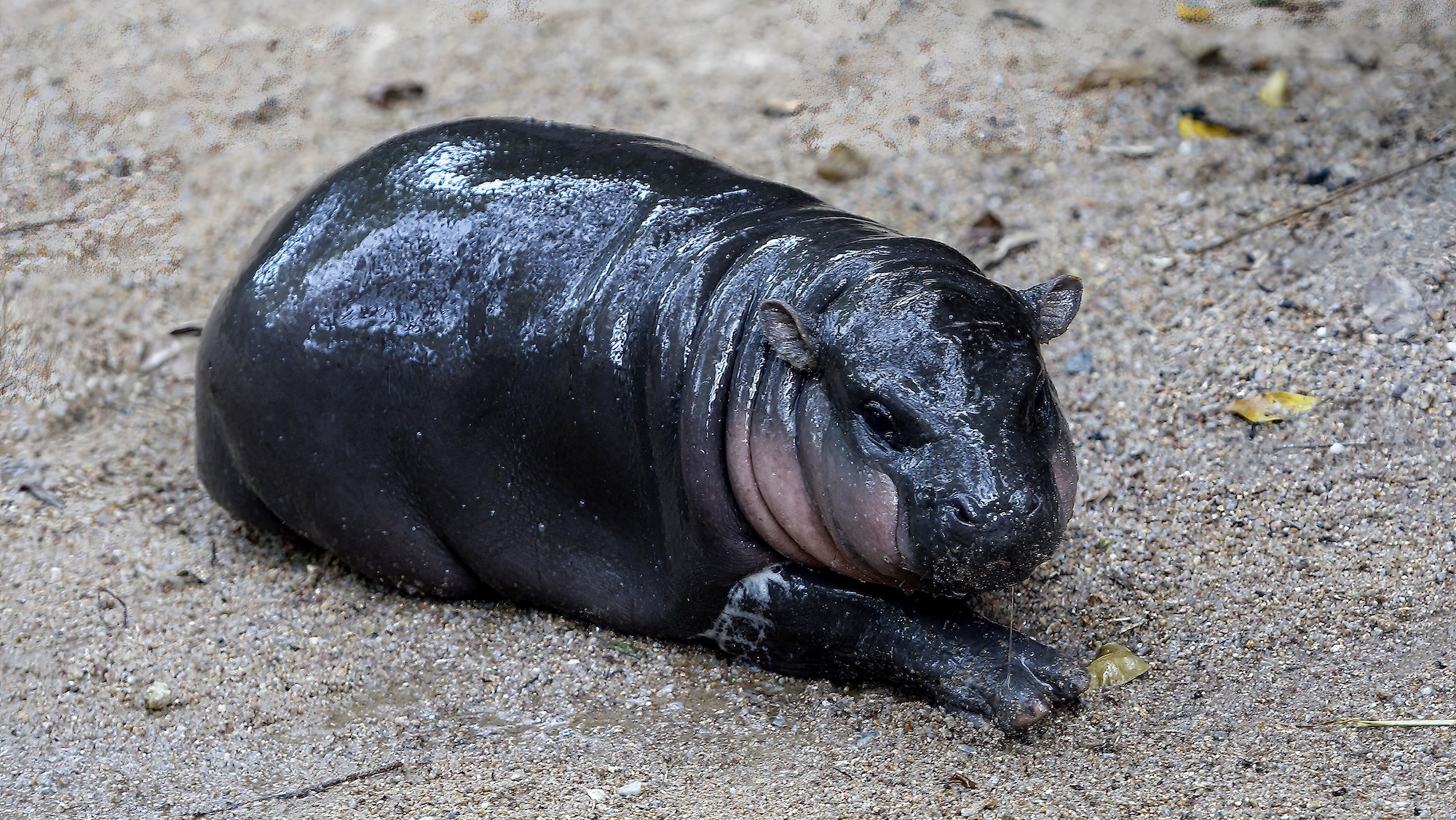Thousands of years before a tiny pygmy hippopotamus from a zoo in Thailand named Moo Dang became an internet sensation, an extinct species of dwarf hippos (Phanourios minor) roamed a lush Mediterranean island. These small hippos and dwarf elephants (Palaeoloxodon cypriotes) lived on Cyprus. That is, until paleolithic humans arrived and both species disappeared about 14,000 years ago.
Now, an international team of scientists found that the first paleolithic hunter-gatherers may have first driven the hippos and then the elephants to extinction in less than 1,000 years. This new hypothesis refutes some earlier arguments that suggested that a small human population on the island couldn’t have caused these extinctions so quickly. The findings are detailed in a study published September 17 in the journal Proceedings of the Royal Society B Biological Sciences.
[Related: Researchers want to unlock the genetics of the world’s tiniest animals.]
Cyprus was home to only these two species of megafauna during the Late Pleistocene. The dwarf elephant was roughly 1,000 pounds, compared to its much larger modern counterparts that can reach up to 12,000 pounds. The dwarf hippo was about 286 pounds, compared to the 9,000 pounds that adult hippos weigh today. Both species disappeared soon after humans arrived roughly 14,000 years ago.
Earlier research found that large groups of hundreds to thousands of people may have arrived on Cyprus in two or three main migration events over less than a millennium. The influx of humans had an effect on the megafauna on the island. However, other extinction events have taken place over several thousands of years, so for both species to disappear from the fossil record in such a short amount of time is a paleontological mystery.
In the new study, the team built mathematical models combining data from several scientific fields, including paleontology and archaeology. The predictions in the model matched with the timeline that megafauna like these elephants and hippos disappeared from the palaeontological record on the island.
“Cyprus is the perfect location to test our models because the island offers an ideal set of conditions to examine whether the arrival of populations of humans ultimately led to the extinction of its megafauna species,” Theodora Moutsiou, a study co-author and archeologist from the University of Cyprus, said in a statement. “This is because Cyprus is an insular environment and can provide a window back in time through our data.”

Based on their reconstructions of human energy demand, diet composition, prey selection, and hunting efficiency, the models demonstrate that the roughly 3,000 to 7,000 hunter-gatherers on Cyprus were likely responsible for driving both the dwarf hippo and dwarf elephants into extinction.
“Our results therefore provide strong evidence that paleolithic peoples in Cyprus were at least partially responsible for megafauna extinctions during the Late Pleistocene and early Holocene,” Corey Bradshaw, a study co-author and paleoecologist from Flinders University in Australia, said in a statement. “The main determinant of extinction risk for both species was the proportion of edible meat they provided to the first people on the island.”
[Related: Ice Age humans may have used pikes to hunt mammoths.]
According to the team, this type of model can be used to better understand the impact that small human populations can have on native ecosystems and how that drives major extinctions. The study is also part of a University of Cyprus initiative called MIGRATE (Modelling Demography and Adaptation in the Initial Peopling of the Eastern Mediterranean Islandscape) that seeks to better understand this critical period in the island’s prehistory.

